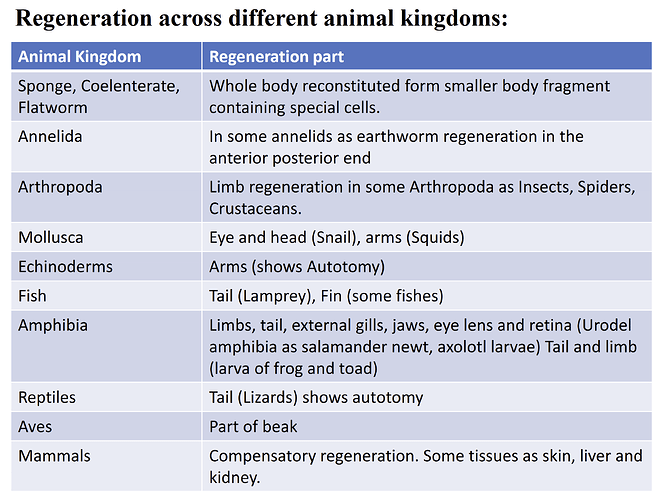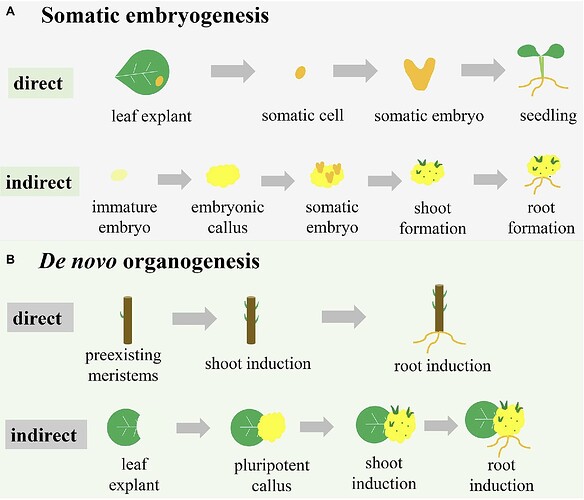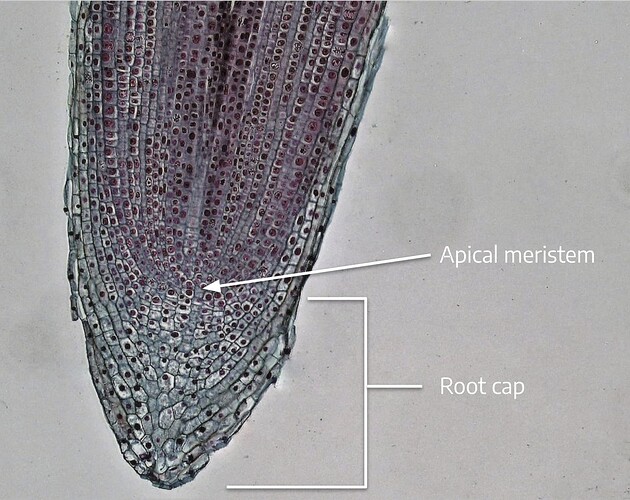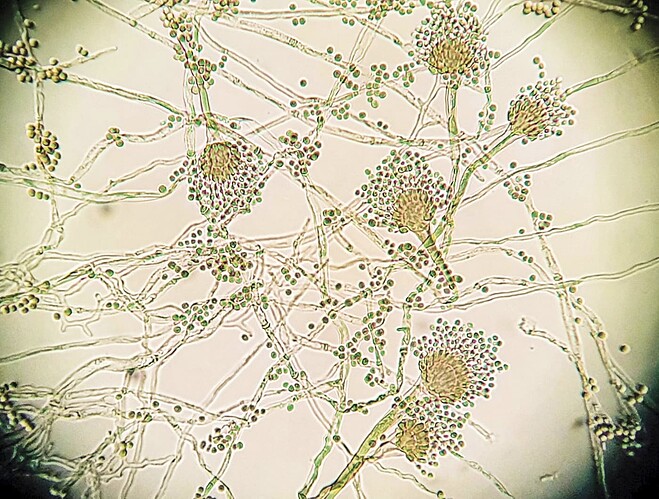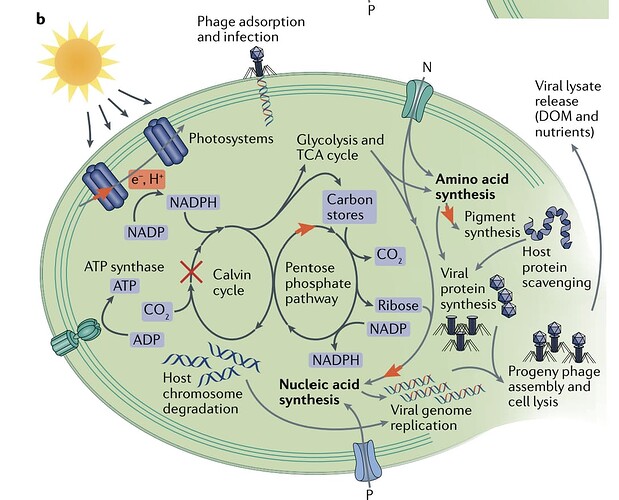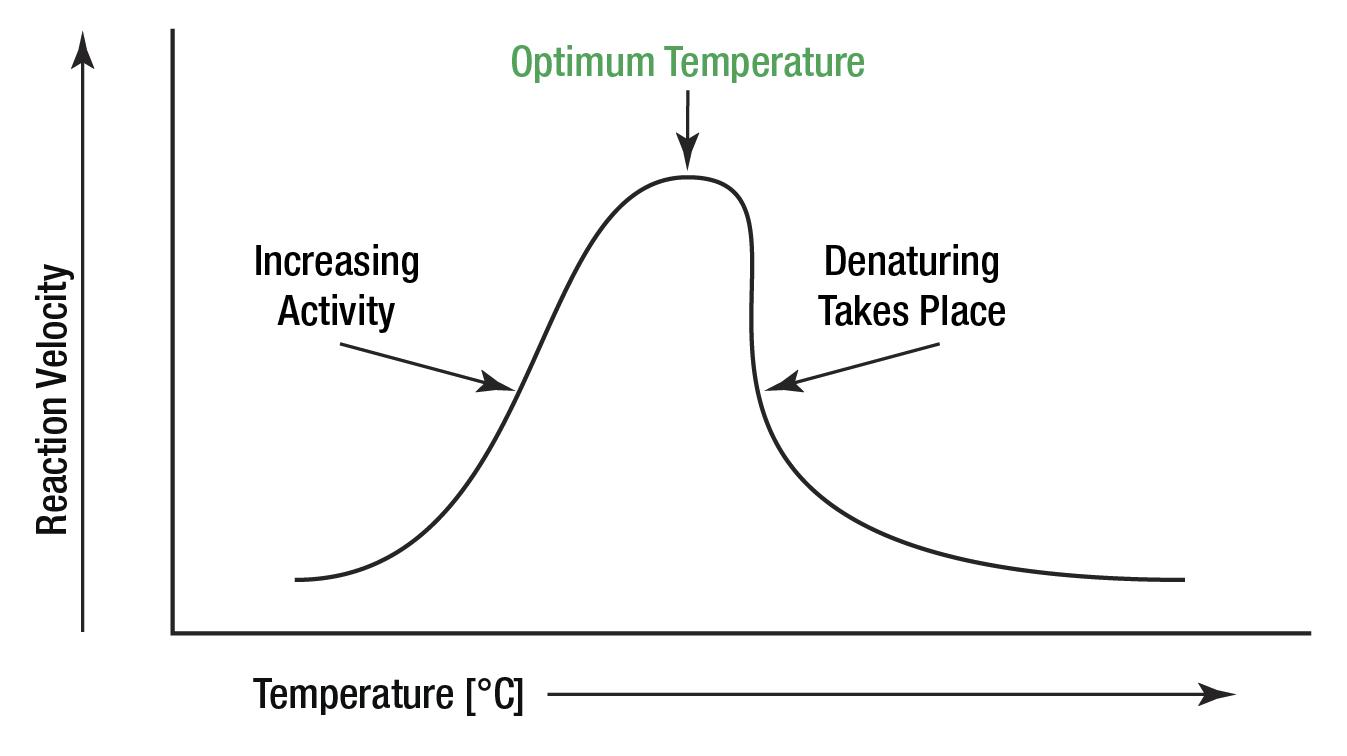A note before starting - this is part scientific information and part my opinion and unlike the previous ones, there is a lot of text, so I’m sorry and that’s why I included this small abstract at the beginning.
Abstract
- Introduction - why I decided to write about it
- Explanation - I explain from this in a scientific definition regeneration and healing processes and various damage factors.
- Additional information - healing and repair of single-celled structures and how to present them in the single-celled phase
- Expansion - how I see that the renewal can be seen in the game or expressed in it
- Extras - a place for viruses and cancer and the behaviors around them
- Added - types of regeneration and healing in different kingdoms
- Summary - my closing words and my thought
Introduction
During my undergraduate studies, I started messing with genetic engineering, and research with bacteria and viruses, and as of this writing, I am trying to get into a research lab that investigates the interactions between viruses and bacteria in the sea (about which we have very little information) and their effect on both ecological and physiological systems.
At some point, I ran into something in my studies about regeneration. As a bug in the game, this is an understandable issue - you take damage, and then after a while, you regenerate back to maximum health.
In reality, this is a much more complex and unpredictable process than everyone thinks - for example, did you know that in a negative gram bacteria, if one of the cell’s inner membranes takes damage, it will affect its metabolism negatively and lower ATP production? (Pathogenesis of Gram-Negative Bacteremia - PMC)
Regeneration is one of the most important mechanisms that a living creature has, and it’s not just one mechanism, it’s a whole network of ways, tools, and adaptations that keeps the living creature functioning and not dying from the slightest mechanical injury.
Because of the approach of the multicellular phase, I think it was appropriate to start talking about this basic but very important topic and I also think that this topic can also be related to the cellular phase (as in the example shown before).
In this thread, I discussed several topics that tie around this topic, what effect they have in the living world, and how they can affect the game.
I am focusing on a more scientific direction than the gameplay of the game, which is subject to the consideration of the programmers, but I do want to make this topic more accessible and focus more deeply and also maybe try to expand the topic in this regard.
I am here will also add sources of information that you can reach in depth in the designated places.
And a final note - I use a third party that translates what I write yes. If by chance there is something you do not understand, I would be happy if you could ask me and clarify it for me.
What is regeneration?
Regeneration is a natural process involving the repair, replacement, or regeneration of cells, tissues or organs, and even whole body parts in a living being. ( National Institute of General Medical Sciences )
It is a way to repair or complete the deficiency, in order to help the creature survive. This mechanism is assumed to have developed with the beginning of multicellular evolutionary development or even earlier if we consider the repair capacity of single cells such as the L-cycle ( The L-cycle: a Process of Regeneration in Bacteria | Microbiology Society )
But, we don’t really know how it started and what is the motivation for regeneration, but one thing is certain - a creature that had this ability survived so well that it actually exists in every living thing in some form and in different strengths. For more detailed information, I suggest you go here:
https://www.frontiersin.org/articles/10.3389/fevo.2021.621686/full
But in short - there are many mechanisms that we are still researching and trying to decipher, which if we manage to understand the mechanism, can change medical ability, but here this paradoxical question arises - how if it is a very basic and important ability, for some living creatures, and even some cells in the body (such as Neurons in humans), limited and even silenced this ability?
Here I will list 2 main mechanisms that we know (on animles) and understand what their role is:
Epimorphosis
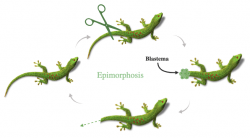
It is a general name for the process in which the regeneration of mature body parts from a group of similar cells is involved. This process begins right after the amputation itself - where at first the body blocks and creates a clot that prevents the injured body from suffering greater damage. Then a group of cells located near the damaged area form a group of cells known as a “blastema”, where the cells lose their specialization and become somatic stem cells. After that, they start to get a mass of cells and finally, it starts to take shape according to the shape of the missing part. It was not exactly the same as the severed part, but it was able to replace it to a certain extent. (Epimorphosis - Wikipedia)
These are the mechanisms that exist in creatures such as lizards and salamanders.
This is a process that can take a long time and requires a lot of energy investment that can affect the creature’s chance to reproduce and survive. But this process is found in many vertebrates (including humans in a very limited way), which indicates its importance. ( Evolution of epimorphosis in mammals - PubMed )
Morphallaxis
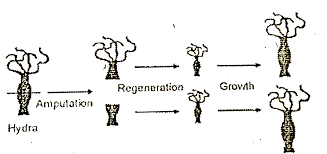
This is another way of regeneration, observed mainly in “less developed” living creatures (flatworms, hydras, sea anemones, sea sponges) where it is a process of “reshaping” and reconstruction of the severed part. It is an ability capable of creating a completely new body at an extreme level, by reshaping existing tissues and designing them according to the genetic code for the missing segment. It can be said that this is a form of asexual reproduction. ( https://byjus.com/biology/morphallaxis/)
Compensatory regeneration
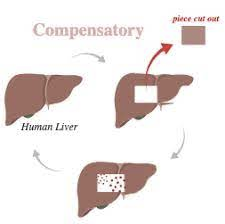
This is another mechanism, sometimes third and sometimes not, but it is important for me to mention it, which is a regenerative capacity where the cells involved do not lose their function during this process. This is a process that exists in organs (such as the liver in humans) and they condense the main way of a multicellular organism to repair damaged organs, but not all organs are able to do this properly. (Compensatory growth (organ) - Wikipedia)
The differences between the different types of regeneration

( https://mgcub.ac.in/pdf/material/2020040909252911367f47fc.pdf, https://onlinelibrary.wiley.com/doi/full/10.1111/j.1440-169X.2007.00919.x )
As I wrote above, it seems that the more “complex” the living creature is, the more limited its regeneration mechanism becomes. We don’t know for sure why this is so, but we can assume that since there are more control mechanisms in the body in general that the creature is more complex and how important this part is determines how much the regeneration will take place.
As an example in “simple” creatures such as the flatworm, if you cut it in two, it will manage to restore its entire missing body. This is possible because it has no internal organs that make this difficult. And from it as we go up in complexity, we see how less and less their ability to regenerate is expressed.
We still do not know the reason for this and are trying to decipher the process in depth. But animals are not the only creatures capable of regeneration.
Regeneration in plants
In plants, their regeneration mechanism behaves differently from that of animals. In plants, their ability to regenerate comes from a special layer in them called the Meristem - a layer that contains unspecialized stem cells that participate in their growth process.
And the difference between animals and plants arises - animals grow when they are young and they stop when they reach maturity.
Plants are in “perpetual youth” and they are always growing, and this is where this special layer enters into the function of regeneration - even if part of a plant is cut off or destroyed, this layer is able to regenerate, as if it had been regrown, and from that comes the plant’s good ability to regenerate after, for example, a fire or the cutting of a stem, provided they have enough nutrients that can provide this growth.
This is due to the plant’s problem that it is unable to move, making it particularly vulnerable to predation, so any ability to regenerate is much more essential than an animal that is able to escape from the place and avoid injury when possible.
Admittedly, we are not able to direct precisely why in plants it developed this way and animals did not.
Regeneration in fungi?
Unfortunately, I couldn’t find any information about it, but I do know one thing - fungi consist of long rows and fibers of monosomal cells that have only come to reproduce, they connect and form a gamete that is capable of reproduction.
They have almost no organ or complex structure that requires it to maintain regeneration over time and they simply create new ones.
But here I am in theory trying to explain why and how, but since there is no information on this subject, it will remain an open question.
( that the closes one : Light and electron microscopy of oospore maturation in Saprolegnia furcata: 2. Wall development - ScienceDirect )
“Regeneration” on unicellular
The process of the mechanisms in which unicellular organisms function in a different way should be called “regeneration” these are more like “repair mechanisms” - DNA repair, constant maintenance of membranes, proteins and feedback reactions that keep the cell alive.
Unlike multicellular creatures, which if they lose an arm or a leg, can continue to live without it (if they don’t bleed to death or something like that), but if the cell loses even the smallest part of the membrane, all the cytoplasmic contents that exist in it spill out, “kill” the cell before he could even react to what happened.
They would rather kill themselves than repair themselves just because he doesn’t have enough flexible abilities to respond to a situation of injury, but he also doesn’t need to because there is no evolutionary priority or pressure to deal with something like amputation or repair.
But, a small repair like repair of DNA or replacement of damaged parts is something that works all the time and is required to keep the creature alive.
And here I will focus on the following topic:
Injuries and Healing
After we talked about regeneration in the scientific sense, we can focus on the more understandable topic above it - injuries and breakdowns.
Cuts, bruises and hemorrhage and everything in between, is something more relevant to a multicellular creature than a unicellular one, but each of them focuses on a different point of repair:
In single-celled creatures or at the cell level, as explained before, the repair mechanism is mainly due to the repair of the DNA, which was too important not to leave them intact, and if there is a small mutation that can reduce the creature’s chance of survival, it will most likely not be able to survive and will die, and that is not what that the cell wants and invests a lot of resources just to repair them. Repairing other things in the cell body (membrane, organelles and ribosomes) is always done by replacing and breaking them down in a feedback action, and it all comes from the DNA.
In multicellularity, the repair of tissues and organs comes mainly from cell division - filling in the gaps.
According to the wound repair process, when a wound occurs, if the blood is left aside and after they have coagulated and blocked the passage of blood, the cells begin to multiply and close the place. In the skin, for example, it takes a few days, depending on the rate of cell division and the size of the injury. ( The Wound Healing Process - ScienceDirect)
The problem is that sometimes if the injury is too great or if a critical place is damaged (like the heart or lung), the cells fail to close in time or quickly and begin to cover the place with fiber bundles called collagen. This area, when formed, does not contain living cells and is essentially a dead area. What is also known as “scars”. Scars do not contain cells and cannot heal properly, which essentially makes the place “damaged forever”.
Scars formed in the organs weaken their performance, as in the case of a virus attack that damaged the tissue, behaving exactly like an injury to anything.
This is also one of the presumed causes of why there is aging resulting from the accumulation of permanent damage to organs and also to non-functioning cells. In the worst case, a large accumulation of injuries and errors in cells can lead to cancer.
So it can be agreed that permanent injuries are what indicate how well the creature can live and create, which is not able to repair them, there are mechanisms that are able to try to prevent them.
For example, in the case of an injury caused by viruses, the immune system is the role that tries to prevent reaching such a situation or in the case of an external injury, the nervous system and the brain receive information from the environment about areas where they are able to move (if it is not always effective and learning comes with risk).
How we can translate it into the game?
We will divide the topic into 2 parts: multi-cell and single-cell so that it was easier to understand and so that it was more correct to separate.
Unicellular
As discussed before, the way of “repair” of the cell is always carried out and in case it is in a state of danger, it is able to undergo “cell death”.
All these things already exist in the game and there is no reason to change them.
But the problem comes if we want to add parasites and viruses to the game (whether by design or not).
In fact, there are 3 main types of virus that infect the cell:
The lytic way is the classic way of infecting a virus - it inserts the genetic segment into the cell, the ribosome or the RNA polymerase translates the segment into new viruses and kills the cell on the spot.
The chronic way is that the cell infects in the same way as the first, but instead of killing the cell, this cell continues to create more and more without harming the processes of the cell. This type is rare but exists in nature because they were found in samples
The lysogenic way is the way in which the virus infects the bacterium in the same way, and sometimes behaves like the first way, but sometimes, instead of creating more viruses, the segment is swallowed into the DNA chain of the bacterium and basically becomes part of it and reproduces with it. And at a certain moment in the future when there is a certain trigger, this section will force the diseased cell to start creating new viruses and behave in a similar way to the first time. This is a way that is quite similar to that of the HIV disease.
We recently discovered that when a cell is infected with a virus, it affects its systems and tries to convert them into something like a factory for creating viruses:
(according to the classic way)
What this means is that his ability to heal and repair himself is compromised in such a case.
I think that sticking the player in the bug and just waiting for him to die is not fun at all and it comes down to complete luck, which is not fun and not a good idea.
But it can find its place as a dangerous area that if you drift into, you risk your life and there may be mechanisms that can be added in the cell like CRISPR (which is a defense mechanism in bacteria against viruses originally) (https://crisprtx.com/gene-editing/crispr-case9)
Mark this area with perhaps dark red or semi-prominent dark blue and with signs of exploding cells similar to where it is in the Abyss patch, but it’s a trap! Your HP starts to decline and your only way to deal with it is to get away from that place. If your HP becomes zero, you die (yes yes, it’s intentional) and you yourself spread the viruses. The effect of this, unlike the other cases, will have a more serious effect on the amount of the population, because 40% of the total bacterial population every day dies from a viral infection in the oceans ( Ecology of prokaryotic viruses | FEMS Microbiology Reviews | Oxford Academic)
I think that way it was the most interesting way to add viruses to the game, without destroying the game and so it will remain. I’m also not saying that we had the ability to evolve into viruses, we don’t know how it happened yet and there are probably more than one way. ( Origin of Viruses | Learn Science at Scitable)
[[All the pictures of this part were taken from her letter which unfortunately I cannot share in full until I succeed in being admitted to this laboratory, if]]
Another point I want to mention and I’m pretty sure it’s been discussed before is the reaction of the cell to a temperature change and its effect on its repair capabilities.
We know that in version 0.8 we are going to see adaptability to change and different areas:
There was talk about the change in HP levels, but what no one talked about was the rate of reaction and healing back after damage, which, in my opinion, is a more significant component than a flat amount of HP.
Before familiar knowledge to those who know biology - proteins and enzymes function at certain levels under certain conditions (such as temp.)
This means that if the conditions in which the cell is not suitable or out of range, it has a one-to-one effect on its healing rate and its metabolic rate. What I’m suggesting is that in this case, any absorption of damage in a non-optimal area for the cell, should affect the rate of healing in the event of any damage (viral, ice, heat points or any biological damage from another creature), and force the player to adapt to the location but not punish him too much If and in the case does not do this. This was the best way in my opinion that could be done without changing the gameplay at all and could actually open up new things for challenge or careful thinking without taking too many elements of chaos.
Multicellular
When we come to the healing and regeneration capabilities of multi-cells, we see something different and more familiar to us.
I will also divide this section into two parts - the early part and the later part:
The early multicellular stage
What is true for the first section regarding the single-cell stage, is also valid in this section, but with one more thing that needs to be addressed - the fact that it has many cells (in case it is at this point), means that if one cell dies, the rest will survive, and this already exists in the game itself (admittedly some things need to be fixed related to clarification as of writing these lines), but if I add the idea about viruses, I think it should behave like a chain reaction - as it passes through the viral area, if one cell has taken too much damage from the place, I think that he will be considered dead and will also become the viral area, and the player must leave the place if the central cell (trunk or center) is damaged, the player dies as in any normal way and will pass as in what I mentioned before.
As for the general healing process, it should be similar one-on-one as it is now - after all, leaving the stem cell aside, is affected by the amount of nutrients it has collected. It already works in the game and I don’t need to expand on it.
The late multicellular stage
When we move to this stage, the HP of the small cell becomes meaningless and instead, the HP unites the whole living thing that has become a complex multicellular.
What has been said so far is no longer valid and it actually functions completely differently from how it takes damage, how it heals and how it is affected by the after effects.
Let’s go one by one -
Absorbing damage at this stage functions differently - it started to develop organs and limbs, underwent cephalization, or specialized a certain area for a different function, and this creature encounters a problem - what will happen if this part is damaged?
According to what I explained earlier, there are several types of injuries - flat injury (injury and cuts and bruises and everything in between), serious injuries (which lead to scars or fractures), serious internal injuries (such as injury to one of the organs or disease of the organ) and amputation (complete displacement of a limb, part or complete removal and decay). In each way of this injury, the healing process is different.
Here we encounter a gameplay problem - how do we want to display the HP of the player?
Do we represent them as uniform and constant?
Or do we divide it into sections, each of which has a certain percentage of rules?
Or does everyone have their own HP and only if there is damage to an important central area (heart, brain, or something similar) will it lead to death?
This is an answer that I cannot give, only to present and it is subject to the absolute decision of the game developers. But if I were to decide, I would go for a combination between the second and the third which is a little more logical and I am going to base what I write below on the basis of this idea.
Let’s start with the first type of injury - bruises and injuries.
Any simple hit that is not dangerous will lead to a simple drop in HP. We know this and I don’t need to expand on it. His way of healing is healing and simple closure of the wound area. It will take some of the hunger and the fat reserves minimally to heal the place and the story ends.
Let’s start with the second type of injury - large and deep injuries (serious injuries).
Such an injury is much more significant - we can give an example of you being scratched by another animal and leaving behind a large and deep cut (without describing too much) in an unimportant place (let’s say a hand), two types of damage were created here - the general damage and the permanent damage. The general damage after the drop of a food source and stored fat for healing, the place is healed, but a large scar remains on the hand, giving you more respect in front of your clan members, but this area does not contain cells, and it hurts to touch them. This place is considered a permanent damage area, and a certain percentage of the HP of the area (not of the general) will remain sealed and less HP than it was before.
If the area hits again and is as severe as before, it will risk the fourth type of damage (which will be expanded later)
The third type of injury is internal injury.
This is an intermediate line between the second type and the fourth type, and can be different in each injury, depending on where (is it an important organ such as the heart or brain that an injury to it will lead to death) or is it a fracture of the bone or the external bone (if any) or is it an injury resulting from a disease (as explained in the previous sections). Here the range is large and depends on many factors - whether this organ is able to heal itself effectively (like the liver in humans) and how much damage it has suffered.
For example, let’s take a disease that affects one of the twin organs (for example, one of the kidneys, which is able to heal itself with the same efficiency as the liver). You start out feeling your HP drop due to the disease but in the end, your body has defeated the disease, but the permanent damage remains and it will affect the performance of this organ until you are reborn, but you have a second organ, so the overall performance of this system is not affected, but The damage from the disease remains (depending on how severe the disease was).
Something opposite to this - a bone fracture if there is one, will show more easily and you will see that you are not able to move well and the area will start to heal. Usually, after a bone heals, the area becomes stronger than before, but for example if it’s an injury to a muscle tendon? This recovery will probably take too long and you most likely won’t survive it.
Because of all these examples, you can see how broad this type is.
And the last type of injury is amputation and self-inflicted diseases.
This type of injury is the most serious of the other types and has far-reaching gameplay implications.
We give two examples for each type:
-
Limb amputation - an extreme case while if all the HP of a certain limb drops but the body survives. If you manage to get through this situation without losing too much blood or you have a mechanism that is able to cut off this part (also called autotomy - a defense mechanism that amounts to amputating a certain organ as a diversion or as a tool to keep predators away - like a lizard’s tail), you will need to live without This is if you don’t have the ability to return them (from one of the 3 types of renewal I explained earlier). If you do have this ability, the healing ability will take you a very long time, will take a lot of energy, hunger and fat reserves from you that can be used for other things such as reproduction (mutation and move to the next level or something like that) or growth, which you can’t always achieve.
This process is demanding and takes time and will not always give you the same limb that you lost. The problem of the types of regeneration depends on how complex you are - the more complex you are, the more your ability to heal naturally decreases to non-existent. It is the player’s decision whether he wants this particular area to be able to heal itself or not, because he knows that if by chance something serious like this happens (a more extreme healing of the second type can also be included), he would have to risk these problems and it might be better to give up It absolutely is and there would be more room for maybe mutating points instead or limiting the healing to a certain level, as long as it’s not a sensitive area like the brain or heart, cutting them off can lead to death or extreme irreversible damage that really affects your chances of survival. -
Self-disease - Self-diseases such as allergies and cancer - are a different and relatively opposite type compared to the first section, where actually, in the case of cancer, you die slowly or die quickly if you are exposed to the wrong factor in the case of an allergy, affect the HP in a unique way. For an idea about how cancer can work I base this idea: Cell Number Limited by Cancer.
Cancer is divided into two types - benign and malignant. The Benign is called in a situation where the cancer does not spread from my original location and actually stays in the same place and creates a large lump, limiting the creature’s ability in case it gets extremely large, affecting the execution and its abilities. This type shouldn’t normally drop HP but its effects were noticeable, depending on where it was and how it affected the area. There is no reason to expand on this. A malignant tumor, the one that spreads to different areas of the brain, is considered dangerous. Before what was said in the post I put, in this situation, instead of a countdown, I think it was true that the HP decreased in the infected area and then in other areas the HP also decreased, until the inevitable death or permanent damage (called tissue decay) if not treated quickly, if possible, or interrupted This area is completely. This gives the character a bit of a challenge but on the other hand, gives a window to be told that time is running out in this lifetime. I actually think it’s an interesting mechanic, but not healthy for the game. I’m just presenting the idea here.
Between these two types, here the player’s decision is involved how extreme the healing ability is (normal has always been, but up to a certain limit like healing simple wounds) he wants the creature he created to be - fast and accurate, but with a high energy cost and effective mainly on small creatures, or Slow and early in important and vital areas (which is possible), at a lower energy price and a larger formation is possible, or not at all, especially for the important ones, and that the healing was normal because it is a huge creature and it needs all the energy it needs to be alive.
It was interesting and nice, especially considering the impending arrival of the tissue editor, it might be right for the future to add the healing ability editor and create some kind of energy investment games, just like in the cellular stage that currently exists.
You can imagine the regeneration map editor for each tissue or body part as a two-axis graph - on the X-axis is the size of the creature or area, on the Y-axis is how much healing ability it wants, and, on top of that, shows a peak of how much energy it invests in the event that it is in this state.
This is just an abstract idea and if it happens, it would be at the absolute discretion of the developers.
Conclusion
When you look at healing and regeneration in many games, you can see that “the HP just goes down and then when I go to a safe place, it heals itself without problems”. But when you look at real life, with all the challenges that medicine and biology face and try to understand, the ability to heal, as amazing and extremely important as it is, is sometimes just a dream before a person, until technology manages to break through.
But, in a game where we try to focus on as close to reality as possible, I personally think it’s an excellent opportunity to present the same side that is sometimes ignored, even though it’s obvious, and expand it to horizons that can be amazing and accumulate without changing the gameplay in any radical way.
And in my opinion, it can be precisely at a high level of difficulty, and for those who want to challenge and not abandon something that many games ignore something that is just as complex and interesting.
